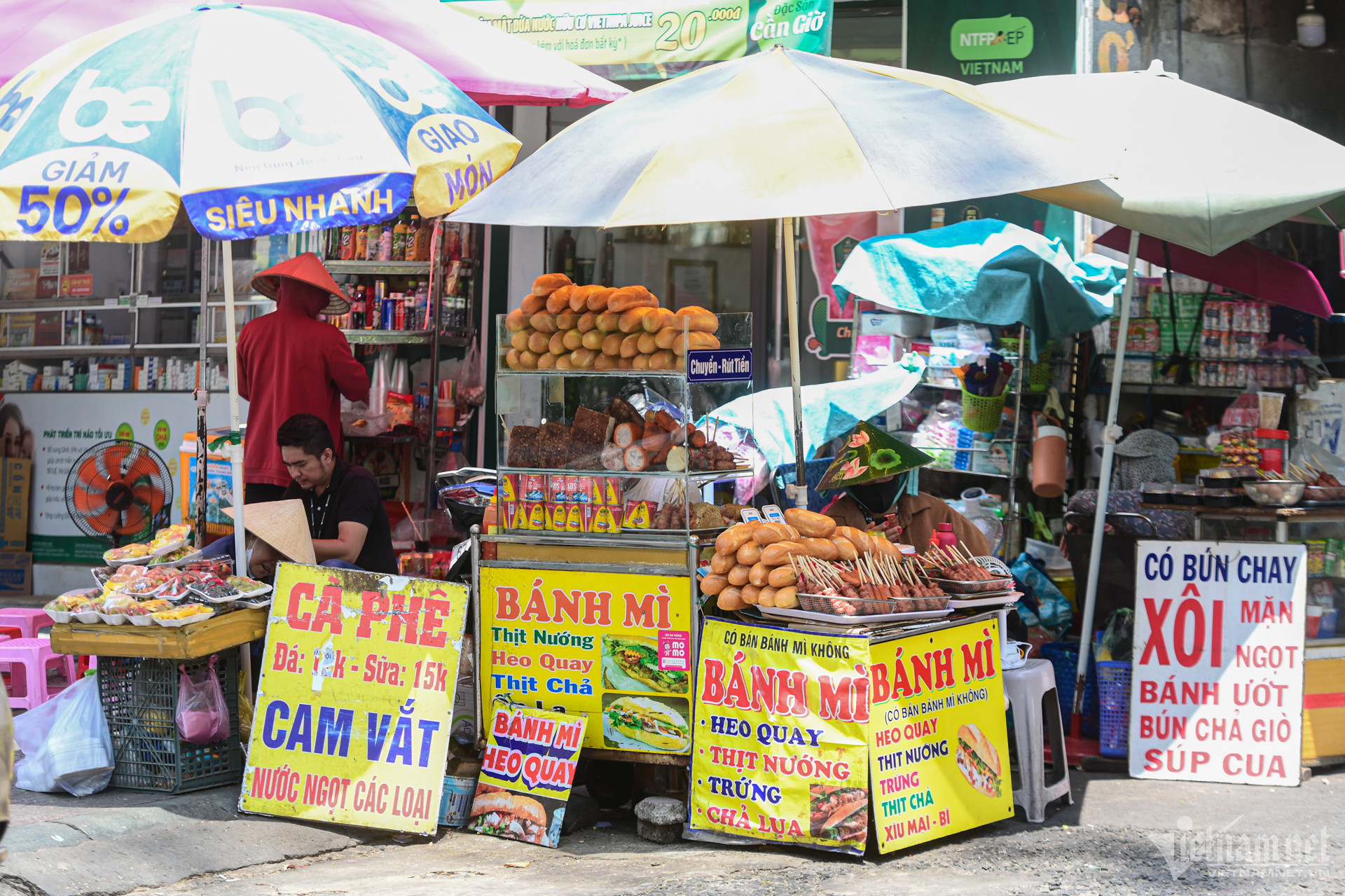
Around the entrances of hospitals in Ho Chi Minh City, numerous food stalls, pushcarts, and mobile vendors sell a variety of food and beverages, presenting significant health risks due to poor hygiene practices. These areas are prone to pollution, exacerbated by street dust and the high potential for disease transmission.
At the gate of Children's Hospital 2 (District 1), many vendors use rudimentary containers for food, covering them loosely with a single nylon bag, and handling the food bare-handed when serving customers.
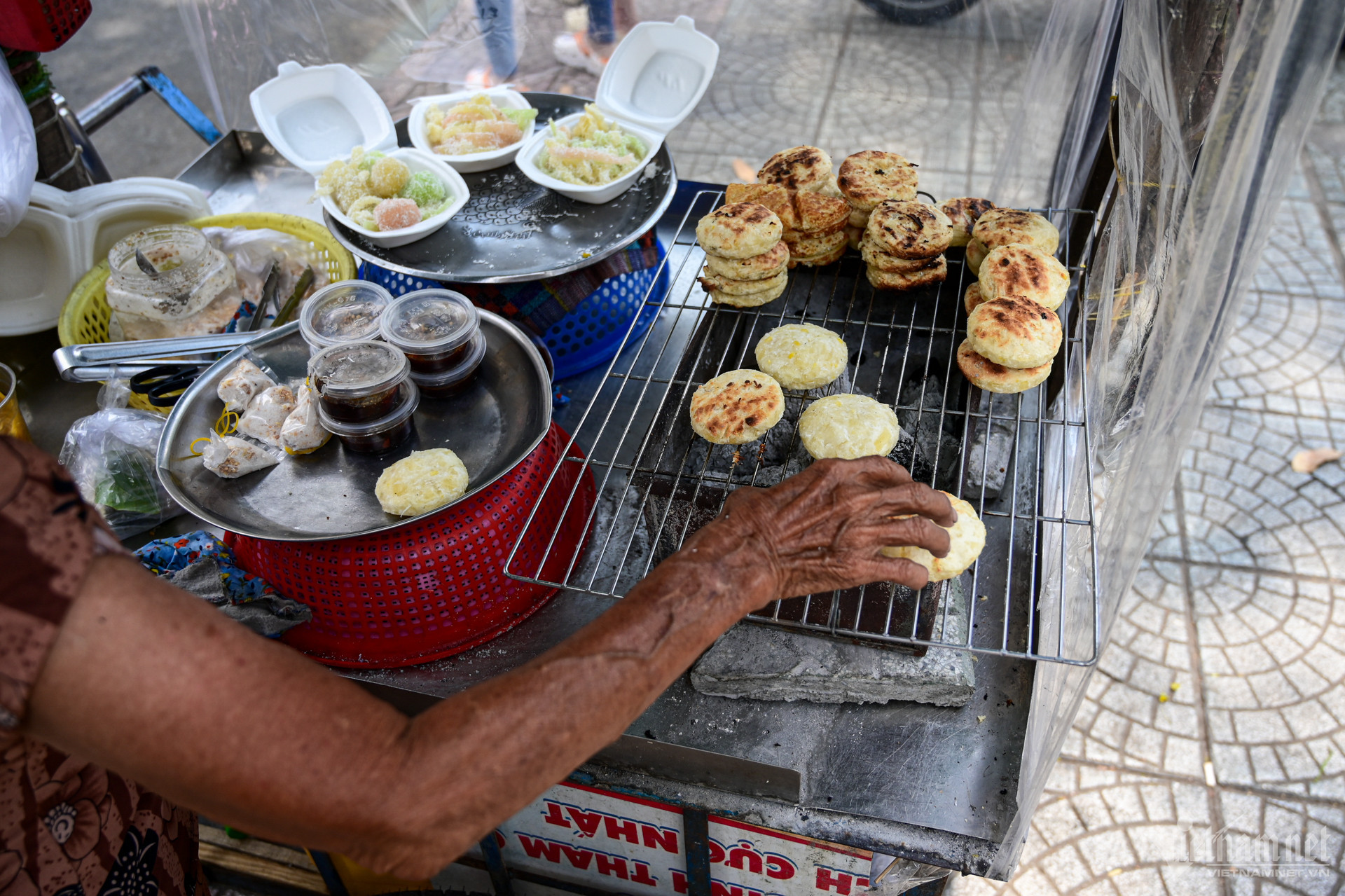
Vendors frequently handle food directly with bare hands, risking contamination.
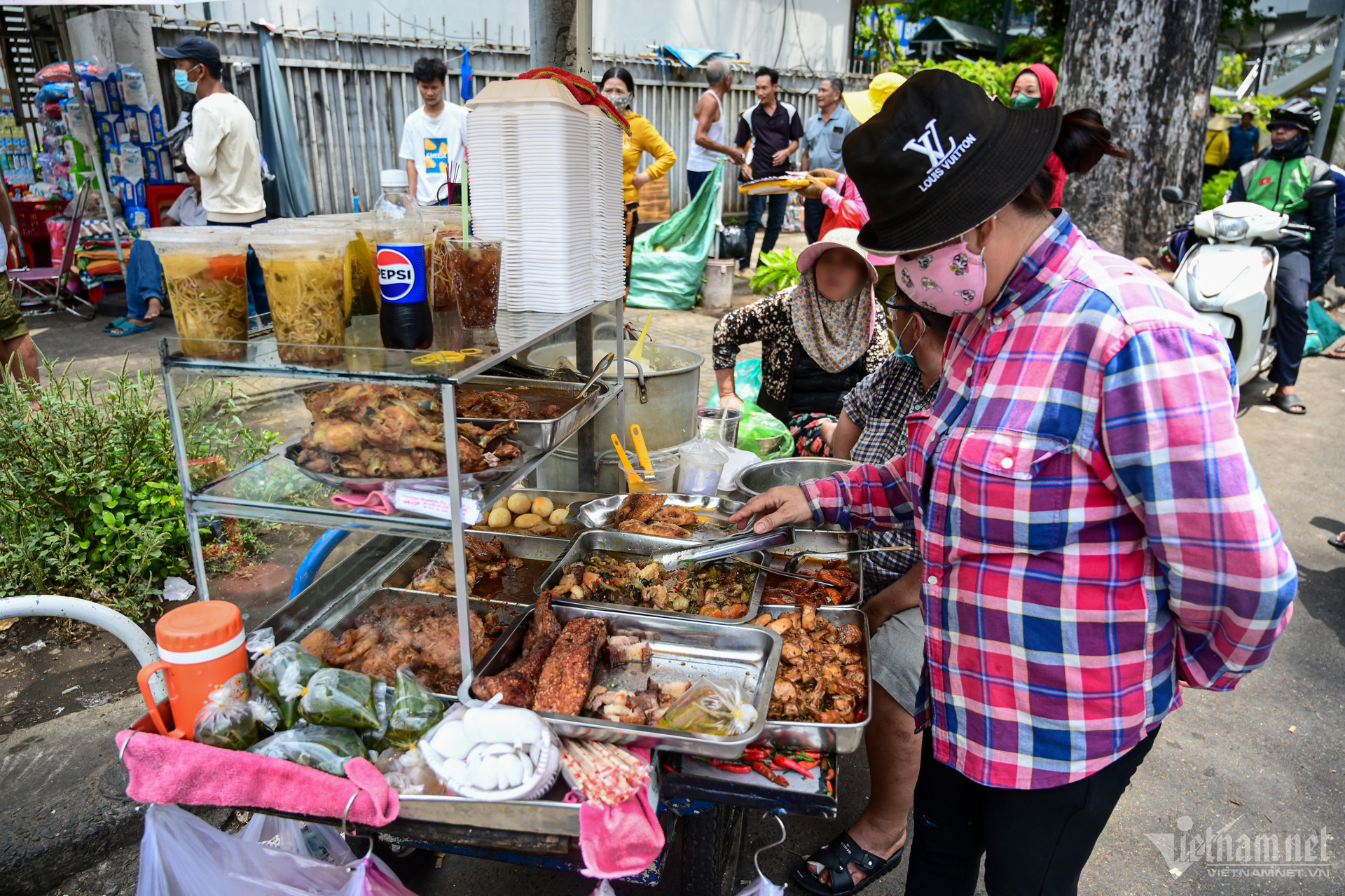
At the gate of Cho Ray Hospital, District 5, a crowded food cart serves patients and their families, with pre-prepared dishes exposed in small glass cabinets without proper coverings. Broth is stored in plastic bags, and disposable utensils are used. These makeshift eateries attract customers with their quick service, convenience, and low prices.
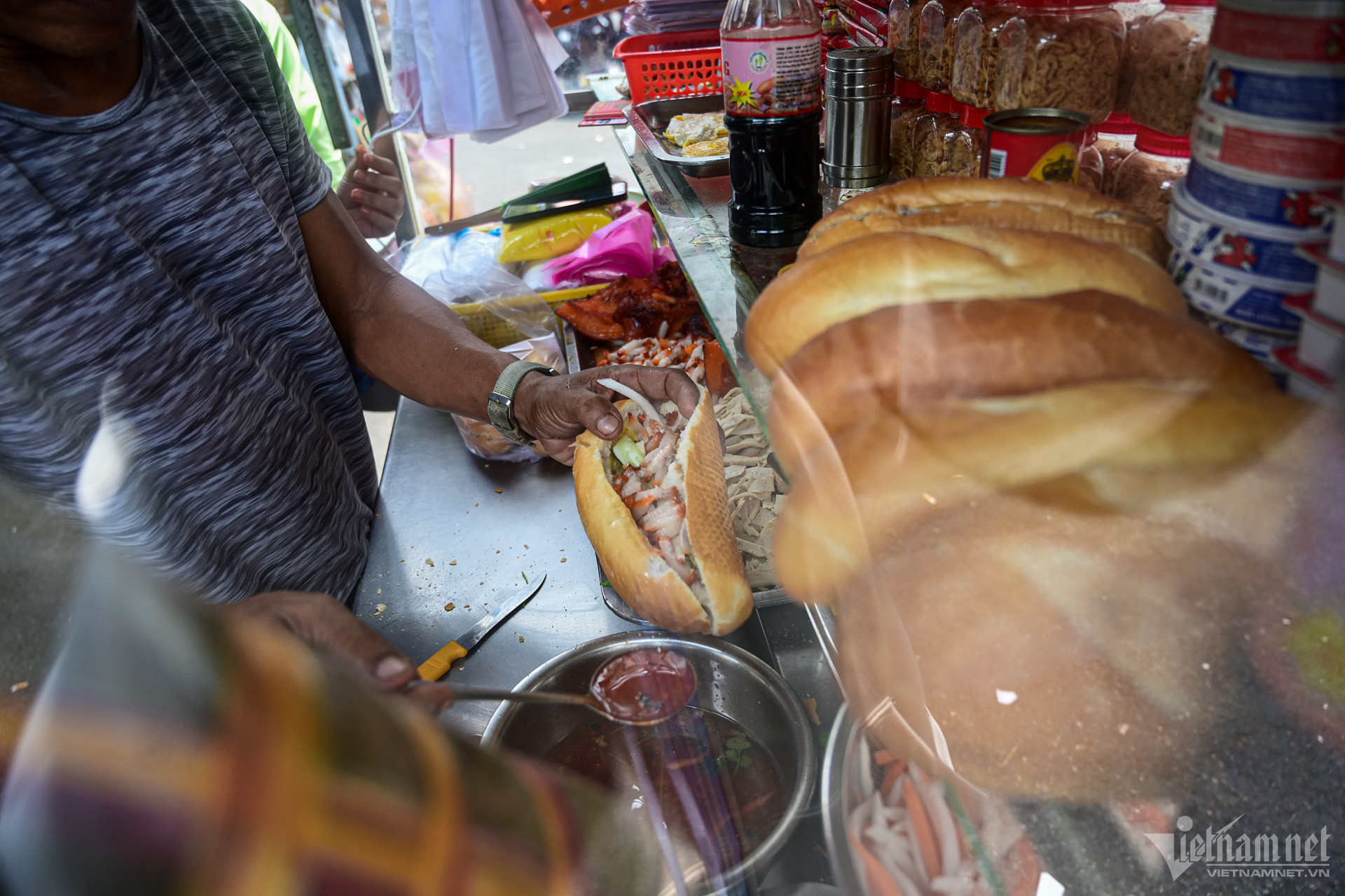
The sandwich vendor does not wear gloves while preparing food for customers. At most sandwich stalls, the fillings such as meat, sausage, vegetables, and pickles are pre-cut and displayed on the counter all day, even though the hot weather can cause the food to spoil.
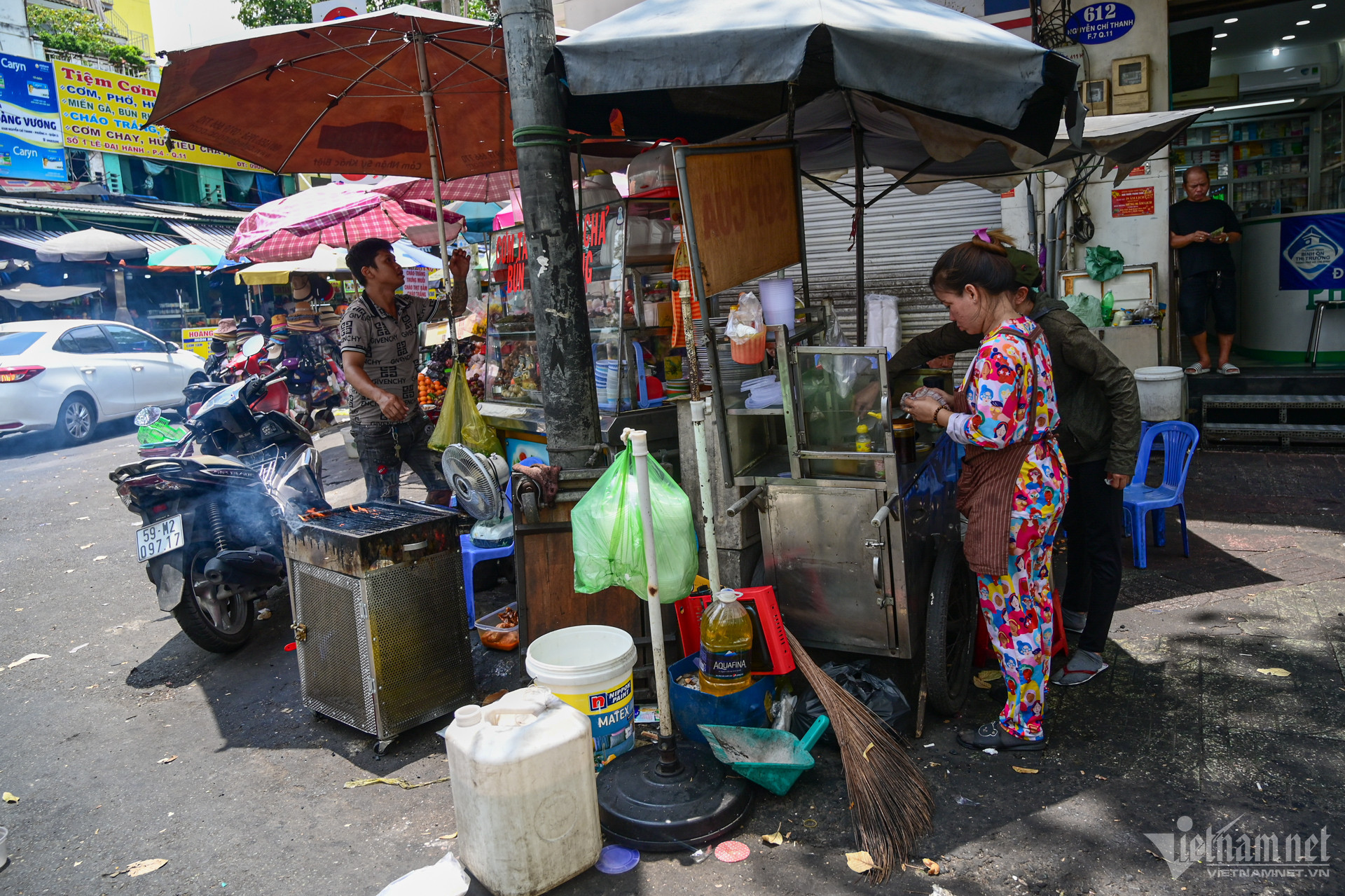
Many rice vendors set up on the sidewalks around hospitals. Raw meat is placed directly on the ground, surrounded by unsanitary items like brooms, buckets, and basins. Many vendors use just one container of water to clean bowls, chopsticks, and cooking utensils, which are only rinsed 1-2 times.
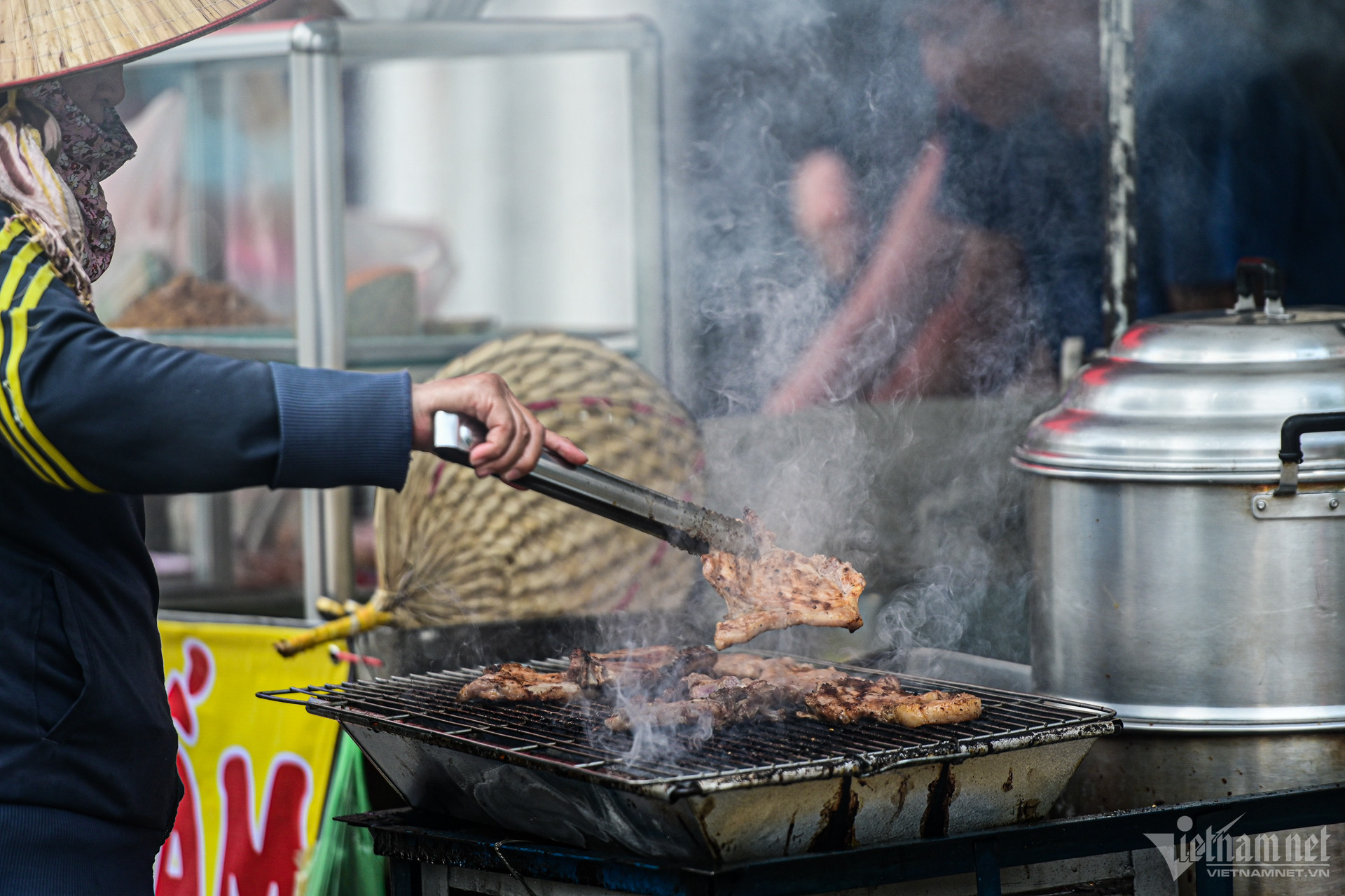
Many relatives of patients choose to eat at eateries rather than street vendors, believing them to be more sanitary. According to experts, food poisoning is caused by consuming food contaminated with bacteria, bacterial toxins, or other harmful substances. The agents causing food poisoning can be microorganisms (bacteria, viruses, parasites), bacterial toxins, chemical toxins, naturally occurring toxins in food, or spoiled food.
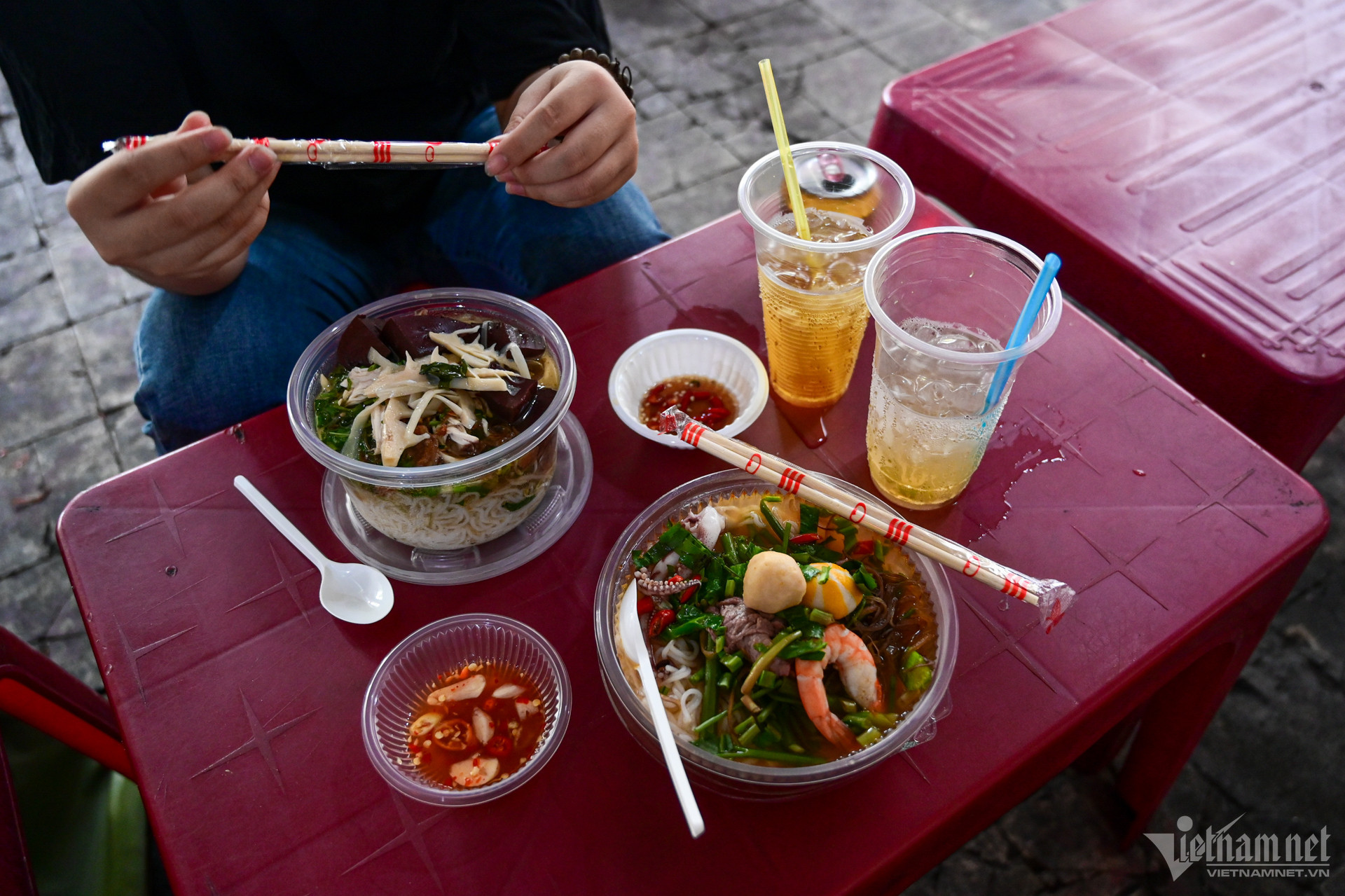
At food stalls around the hospital, most of the eating utensils are made of plastic and are single-use.
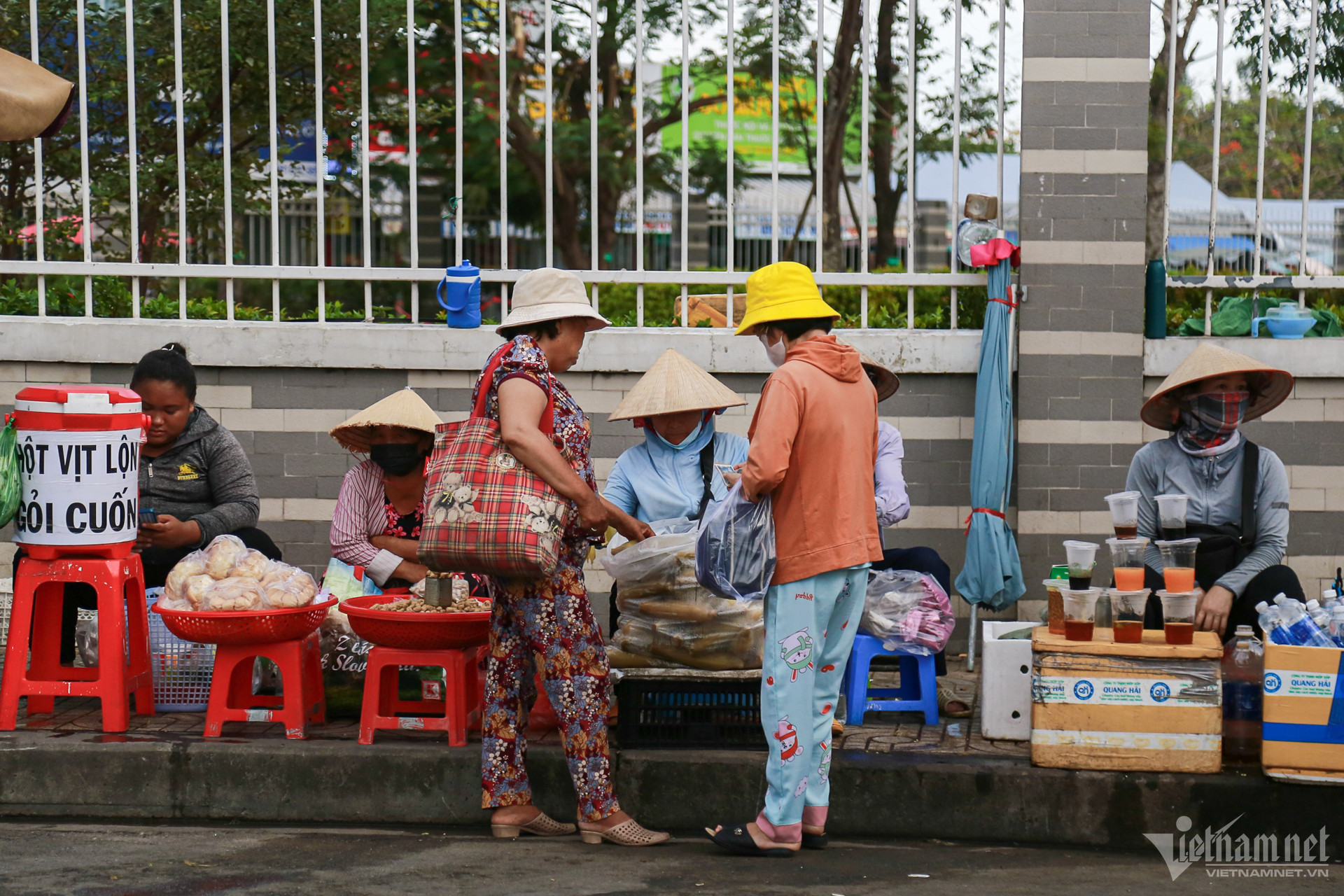
At the gate of Oncology Hospital 2 (Thu Duc City), there are dozens of very rudimentary street vendors. The vendors only need to use styrofoam boxes and red stools to set up their goods for sale.
 |
 |
Customers sit and eat right on the sidewalk, without the need for tables. Many trash heaps are mostly filled with food containers and nylon bags discarded right next to the food stalls.
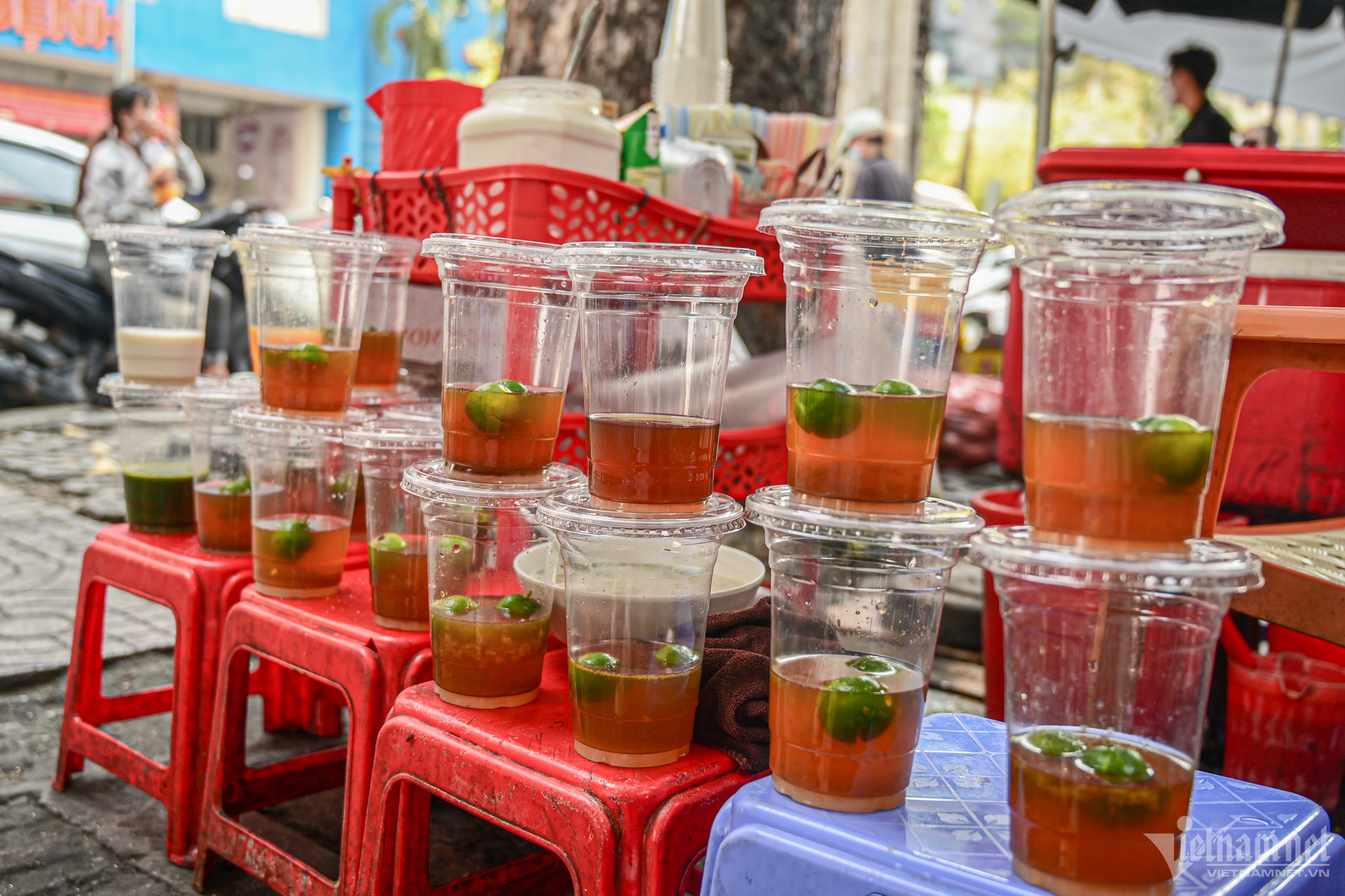
The homemade beverages sold in front of Tu Du Hospital pose many food safety and hygiene risks, such as unknown ingredient sources, unsanitary preparation processes, and substandard food storage conditions. Common symptoms of food poisoning include fever, vomiting, diarrhea, abdominal pain, and fatigue. It is important to note that many illnesses can be mistaken for food poisoning, such as brain diseases, right ventricular myocardial infarction, and various abdominal emergencies (such as perforated peptic ulcers, appendicitis, bowel obstruction, acute pancreatitis, biliary ascariasis, ruptured ectopic pregnancy), and other conditions.
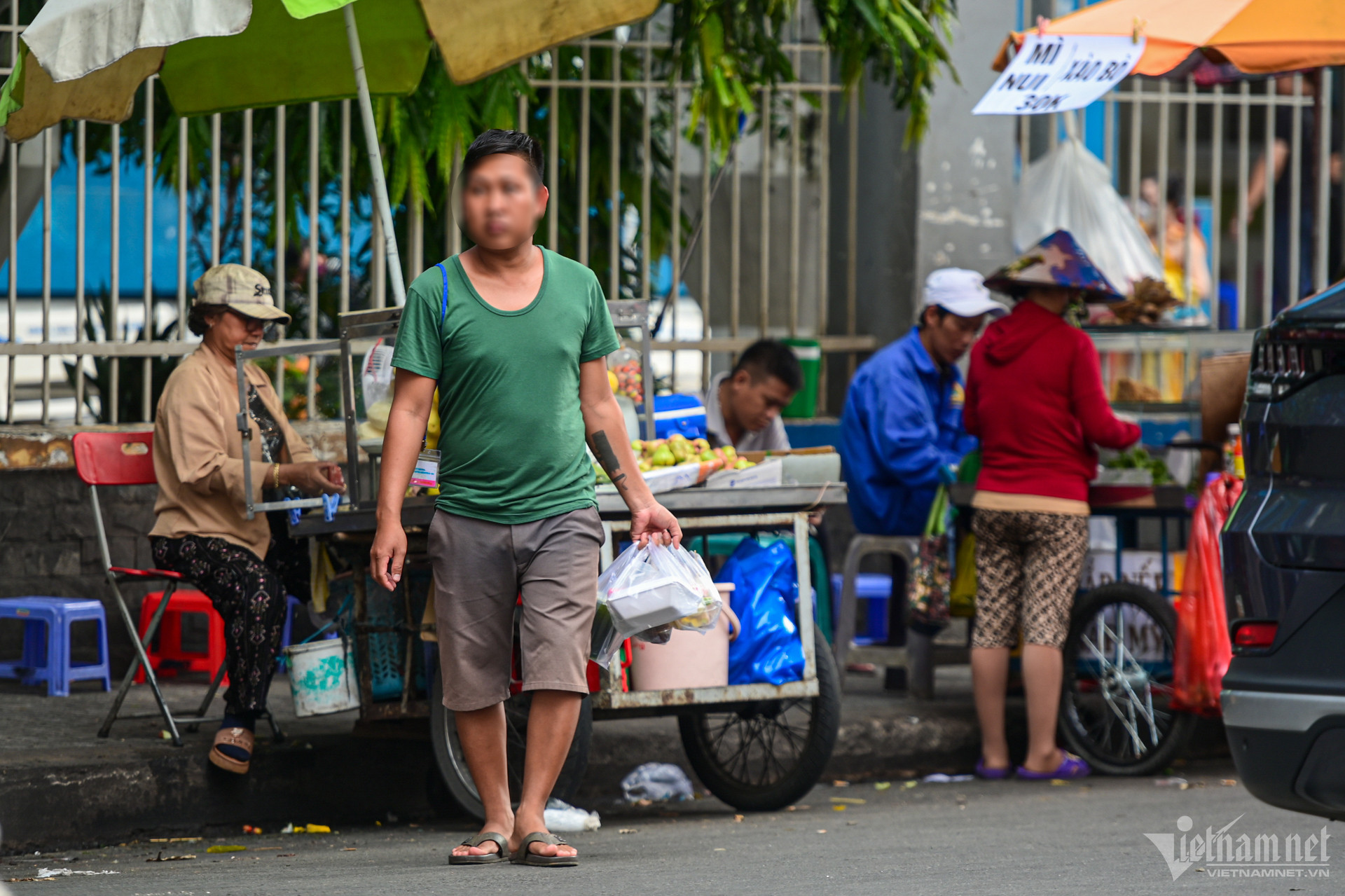
"Because I have a relative who has been hospitalized here for quite a while, I frequently eat at the food stalls around the hospital. Although I know that most of the food is unhygienic, this area offers a wide variety of food at reasonable prices, making it convenient without having to travel far," a patient's family member shared.
According to statistics from the Ministry of Health, in the first quarter of 2024 alone, there were 16 food poisoning incidents nationwide, resulting in 659 cases of poisoning, which is three times higher than the same period last year, and 3 fatalities.
Nguyen Hue